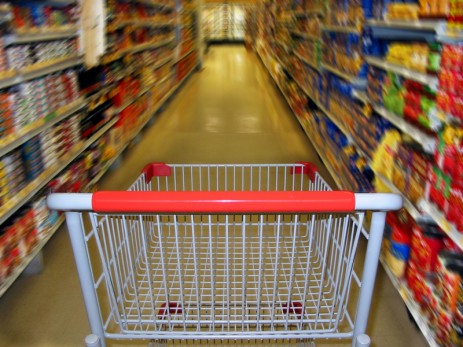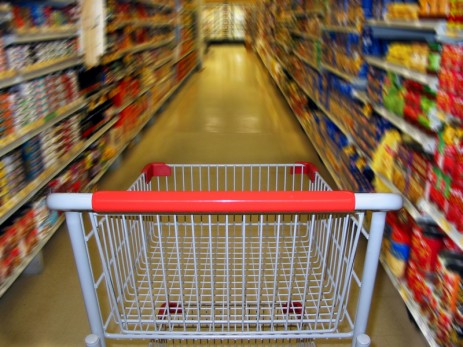 A recent University of Washington study showed Seattle-area shoppers at Whole Foods are much less likely to be obese, on average, than shoppers at the less expensive chain Albertsons.
A recent University of Washington study showed Seattle-area shoppers at Whole Foods are much less likely to be obese, on average, than shoppers at the less expensive chain Albertsons.
I shrugged when I read this. From what I can tell, the study didn’t control for income: it’s well established that Whole Foods shoppers have higher incomes, which has always been correlated with low obesity rates. Indeed, some public health experts will tell you that we don’t have an obesity epidemic so much as we have a poverty epidemic.
But economist and blogger Mike Konzcal responded to the study by highlighting a fascinating economic analysis [PDF] that documented statistically how low- and high-income consumers exist in different food systems. In essence, that means low-income consumers have “successfully” managed to experience less food price inflation than rich people, since the foods they buy are those whose prices have been falling, i.e. highly processed foods and soft drinks.
To some, this represents evidence that concerns about income inequality are misplaced, since poor people have figured out how to feed themselves cheaply and aren’t experiencing “real” food price inflation. But Konczal makes the point that economists conveniently and typically leave out something important. In the economists’ world, “nobody gets diabetes”:
The long-term health costs of “choosing” a different inflation rate for your food isn’t estimated, nor are they included to see if it all balances out economically.
Which is to say that when you hear arguments that income inequality isn’t so bad because consumption inequality is less than you’d think, it’s important to be skeptical about what in fact is being consumed. Sometimes it is exactly what you think it is: less quality and worse long-term health outcomes. And the long-term consequences for the health and well-being of the working poor are exactly the type of information econometric stats obscure.
This fits in to the larger argument that Michael Pollan made in his New York Review of Books article and Tom Philpott echoed (as have I) — that our food system, indeed our entire economic system, all but forces low-income consumers into an unhealthy diet. Fixing this will be a tall order, and solutions to this problem will need to be both broad-based and comprehensive, from grassroots efforts to policy changes. But with all this overwhelming evidence of not just our system’s inequality, but its injustice, what are we waiting for?
[Updated 6:00pm ET]: Blogger Matt Yglesias grabbed this quote from an NPR interview with USDA Chief Tom Vilsack which suggested to me that Vilsack needs to read the blogs a bit more. Said Vilsack:
I would say consumers do benefit from the way in which we structured our farm programs, at least as of today, because of the fact that our food is less expensive than it is any place else in the world. Folks in America have a great deal more discretion of what to do with their paycheck.
He’s making the very argument my post is meant to undercut — in Vilsack’s world as in the econometricians’, this cheap food comes with no negative consequences, when we know the opposite is true.
As the data show, our “discretion” comes via farm subsidies that maintain a low price for and oversupply of the corn and soy used in the manufacture of all our cheap, unhealthy food. Healthy food such as fruits and vegetables has virtually no subsidies. This benefits no one except the food processors, and certainly not the vast majority of farmers who grow the crops or the low-income consumers forced by circumstances to purchase the nutrient-poor, calorie-dense final products.




